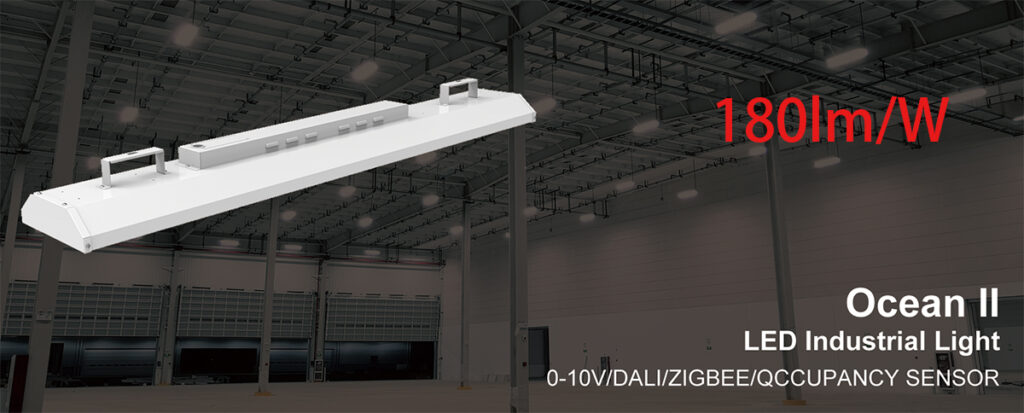Índice
ToggleIntroducción
¿Es más adecuada para sus necesidades la luz blanca cálida o la luz blanca fría? Elegir entre luz LED blanca cálida o blanca fría puede tener un gran impacto en la funcionalidad, la estética y el estado de ánimo de su espacio. Este artículo le explicará cómo elegir el blanco cálido y el blanco frío en zonas residenciales, de trabajo o industriales. Descubra cómo la eficiencia energética de LedRhythm soluciones de iluminación en múltiples temperaturas de color pueden transformar su espacio.
Luz blanca fría: ¿Qué es?
Una temperatura de color de iluminación blanco frío, normalmente en la gama de 5000K a 6500K, proporciona un aspecto claro y brillante. Como reproduce la luz natural del día, es perfecta para zonas que necesitan ser muy visibles y productivas.
La luz blanca fría no es adecuada para dormitorios o zonas de relajación, ya que puede afectar a la secreción de melatonina e interferir en el sueño.
| Aspecto | Descripción |
|---|---|
| Temperatura de color | Normalmente entre 5000K y 6500K |
| Color claro | Blanco frío con un matiz azulado |
| Efecto visual | Brillante, nítido y energizante |
| Contraste | Alto contraste, mejora la visibilidad de los detalles |
| Renderizado en color | Depende del producto; las versiones de alta calidad ofrecen un CRI superior a 90 |
Iluminación en blanco cálido: ¿Qué es?
La iluminación blanca cálida produce un suave resplandor amarillento con una temperatura de color que oscila entre 2700K y 3000K. Produce un ambiente cálido y acogedor perfecto para hogares y zonas de ocio.
| Aspecto | Descripción |
|---|---|
| Temperatura de color | Normalmente entre 2700K y 3000K |
| Color claro | Blanco suave con un tinte amarillo o ámbar |
| Efecto visual | Cálido, acogedor y relajante |
| Ambiente | Crea un ambiente acogedor y confortable |
| Renderizado en color | Normalmente alto, con un CRI que oscila entre 80 y 90+. |

Diferencia clave entre blanco frío y blanco cálido
Las principales diferencias entre la luz blanca fría y la luz blanca cálida se reflejan en la temperatura del color, la percepción visual, los escenarios de aplicación y el impacto psicológico. Ver más diferencias de temperatura de color.
Temperatura de color
- Blanco cálido: Tiene una temperatura de color más baja, normalmente entre 2700K y 3500K. Es similar a la luz del sol al amanecer o al atardecer, a la luz de las velas y a la luz de una bombilla incandescente. La luz tiene más componentes rojos, amarillos y naranjas, lo que da un aspecto amarillento o rojizo.
- Blanco frío: Tiene una temperatura de color más alta, normalmente entre 5000K y 6500K. Es similar a la luz solar de mediodía, con más componentes azules, lo que da un aspecto azulado o blanquecino.
Experiencia visual y atmósfera
- Blanco cálido: Cálido, confortable, relajante y acogedor. Crea una atmósfera suave, tranquila, romántica y hogareña, que evoca imágenes de chimeneas, cenas a la luz de las velas y salones.
- Blanco frío: Brillante, claro, vigorizante y concentrado. Crea una atmósfera de eficiencia, profesionalidad, limpieza y alerta, evocando imágenes de hospitales, oficinas, laboratorios, fábricas y almacenes.
Escenarios aplicables
- Blanco cálido: Ideal para zonas que requieren una sensación de descanso y calidez, como dormitorios, comedores, cafeterías y cualquier entorno en el que un tono cálido sea lo más importante.
- Blanco frío: Ideal para zonas que requieren una visión clara y una atención concentrada, como cocinas, baños, oficinas, fábricas, hospitales, etc.
Otros
- Luz blanca cálida: Esta temperatura de color se asemeja a la luz solar natural tras la puesta de sol, ayudando al cuerpo a segregar melatonina, favoreciendo la relajación y preparándose para el sueño.
- Luz blanca fría: Esta temperatura de color es más parecida a la luz solar del mediodía, suprime la producción de melatonina y favorece el estado de alerta y la concentración. Aunque es ideal para dormir durante el día, una exposición excesiva a la luz blanca fría por la noche puede alterar el sueño.

Ventajas de la iluminación en blanco frío
- Mayor productividad: En oficinas y entornos industriales, el tono brillante de las bombillas blancas frías aumenta la concentración y disminuye el cansancio.
- Representación fiel del color: Perfecto para entornos que necesitan precisión, como estudios de diseño u hospitales.
- Aplicaciones versátiles: Adecuado para lámparas LED blancas frías, globos de luz blancos fríos y focos blancos fríos.
Ventajas de la luz blanca cálida
- Ambiente confortable: Los ambientes relajantes son ideales para el acogedor resplandor de las bombillas de luz cálida.
- Eficiencia energética: Las modernas bombillas LED de color blanco cálido son energéticamente eficientes sin sacrificar el confort.
- Beneficios para la salud: Favorece un mejor sueño y relajación al reducir la exposición a la luz azul.
Selección de blanco cálido o blanco frío para distintos espacios
Iluminación del hogar
Utiliza luces blancas cálidas en dormitorios y salones para crear un ambiente hogareño.
Para mejorar la visibilidad, utilice bombillas de luz blanca fría en aseos y cocinas.
Iluminación de oficinas
Instale bombillas LED de color blanco frío para mantener la concentración y la productividad.
Evite las bombillas de luz cálida, que pueden inducir somnolencia en lugar de alerta.
Usos industriales y comerciales
Las lámparas LED de color blanco frío son esenciales para tiendas, almacenes e instituciones médicas.
La iluminación blanca cálida mejora la experiencia del cliente en hoteles y establecimientos comerciales.
Productos de iluminación en blanco cálido y frío de LedRhythm
LedRhythm ofrece productos de iluminación LED de vanguardia, cada luz led está disponible en blanco cálido o blanco frío, hasta 6500K.
Tanto si es un experto en el sector de la iluminación como un principiante, no dude en Contacto. Podemos personalizar una solución de iluminación completa para usted en 24 horas.
Resuma
A la hora de elegir entre luz blanca cálida y fría, no se limite a comprar en función de sus preferencias personales. Debes tener en cuenta tu entorno y tus necesidades para garantizar la mejor experiencia de iluminación.
Recuerde que los LED blancos cálidos crean un ambiente confortable y tranquilo, mientras que los LED blancos fríos aumentan la concentración y la productividad.
La gente también pregunta
¿Qué es mejor para un espacio de trabajo: el blanco frío o el blanco cálido?
Las luces LED blancas frías son mejores para los espacios de trabajo por su luz brillante y nítida que mejora la concentración y la productividad.
¿Puedo mezclar iluminación blanca fría y blanca cálida en la misma habitación?
Sí. Mezclar luz blanca fría y cálida en la misma habitación es habitual en el diseño de iluminación moderno.
Siempre que la iluminación se divida adecuadamente, las zonas estén claramente definidas y las diferencias de temperatura de color no sean bruscas, puede mejorar el ambiente y la funcionalidad del espacio.
¿Las luces LED blancas frías son más eficientes energéticamente que las blancas cálidas?
Con la misma luz, los LED blancos fríos suelen ser ligeramente más eficientes energéticamente que los blancos cálidos. Esto se debe a que los blancos fríos son más eficientes, pero la diferencia es tan pequeña que el ahorro real es mínimo.
¿La luz blanca suave y la luz blanca cálida son muy parecidas?
Efectivamente. La luz blanca suave y la luz blanca cálida son muy similares y casi equivalentes. Sin embargo, la luz blanca cálida tiene una temperatura de color ligeramente más alta y un tinte ligeramente más amarillento.








